
🎓 After 4 years, 7 papers, countless joyful moments, and meeting so many great people along the way, I’m excited to share that I’ve officially obtained my PhD!
It’s been an incredible journey of learning, persistence, and growth.
My thesis is now available here:
🔗 pure.tue.nl/ws/portalfil...
28.10.2025 10:16 — 👍 5 🔁 1 💬 0 📌 0
Delete twitter from the phone. So you only get there from you computer (if you even need that)
09.10.2025 12:21 — 👍 0 🔁 0 💬 1 📌 0
We are alarmed by reports that Germany is on the verge of a catastrophic about-face, reversing its longstanding and principled opposition to the EU’s Chat Control proposal which, if passed, could spell the end of the right to privacy in Europe. signal.org/blog/pdfs/ge...
03.10.2025 16:14 — 👍 3998 🔁 2433 💬 41 📌 147
I’m flagging this nice book/paper on FHE schemes not necessarily because it’s correct and I endorse it, but because it looks pretty useful. arxiv.org/pdf/2503.05136
22.09.2025 19:21 — 👍 27 🔁 4 💬 1 📌 0
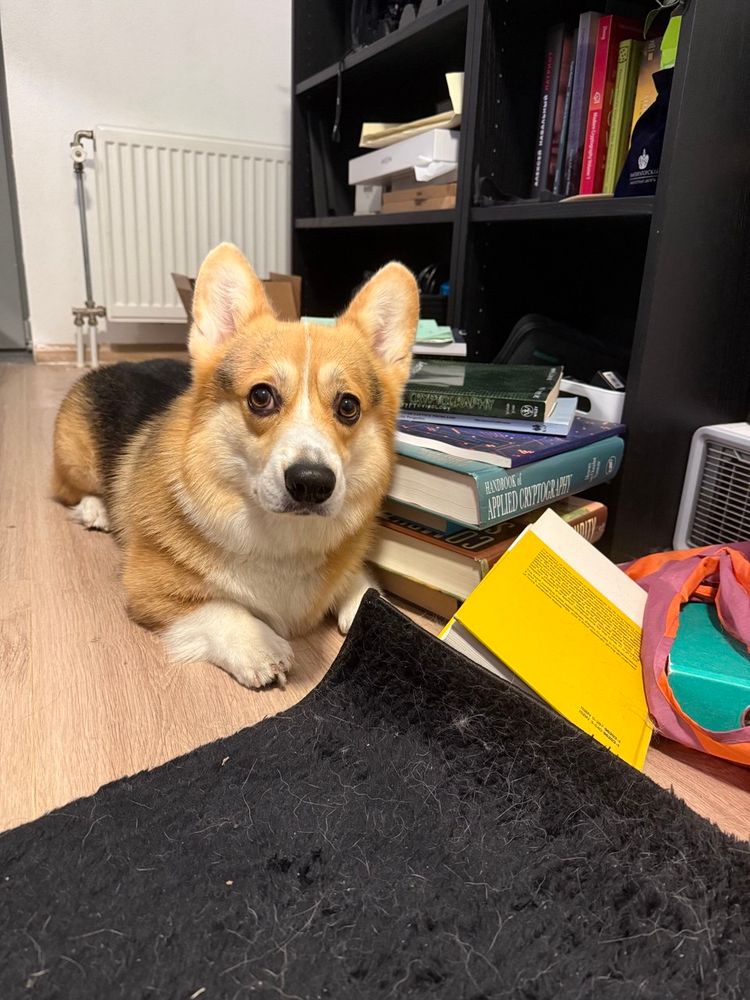
CryptoCorgi
20.09.2025 20:22 — 👍 2 🔁 0 💬 0 📌 0
Some can always find a way to communicate and get uncensored information. But the goal is to disconnect the general audience from accessing independent news. It is important to fight censorship not for your own access, but for those who won’t fight.
18.09.2025 18:09 — 👍 1 🔁 0 💬 0 📌 0
I get mine from news.zksecurity.com :)
And zkmesh.substack.com
15.09.2025 08:26 — 👍 1 🔁 0 💬 0 📌 0

EU Chat Control criticized by 500 cryptographers over privacy risks
Over 500 cryptographers warn the EU draft “Chat Control” could weaken end‑to‑end encryption. The EU council votes on the Danish text on Sep 12, 2025. https://getnews.me/eu-chat-control-criticized-by-500-cryptographers-over-privacy-risks/ #euchatcontrol #privacy #cryptography
09.09.2025 11:37 — 👍 3 🔁 3 💬 0 📌 0
Will there be a recording?
25.08.2025 17:27 — 👍 0 🔁 0 💬 1 📌 0
That is wild! I am envious of your students; that is top-level material!
06.08.2025 18:19 — 👍 1 🔁 0 💬 0 📌 0
I'm thrilled to announce that after months of intensive work, the complete materials for my Applied Cryptography course at the American University of Beirut are now finished: both Part 1 (Provable Security) and Part 2 (Real-World Cryptography)!
06.08.2025 08:01 — 👍 31 🔁 9 💬 4 📌 1
YouTube video by Nadim Kobeissi
Nadim Kobeissi's Applied Cryptography Course
I made a video about my upcoming applied cryptography course: youtu.be/z6kK7rIbyB0
28.07.2025 08:51 — 👍 23 🔁 3 💬 3 📌 0
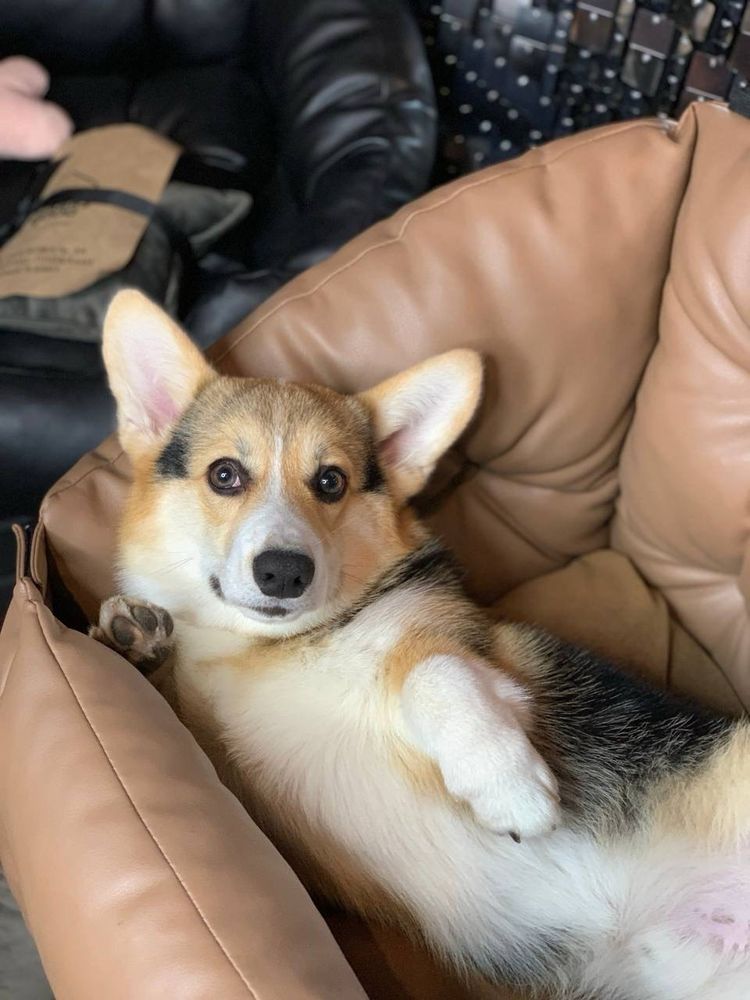 26.07.2025 20:56 — 👍 2 🔁 0 💬 0 📌 0
26.07.2025 20:56 — 👍 2 🔁 0 💬 0 📌 0
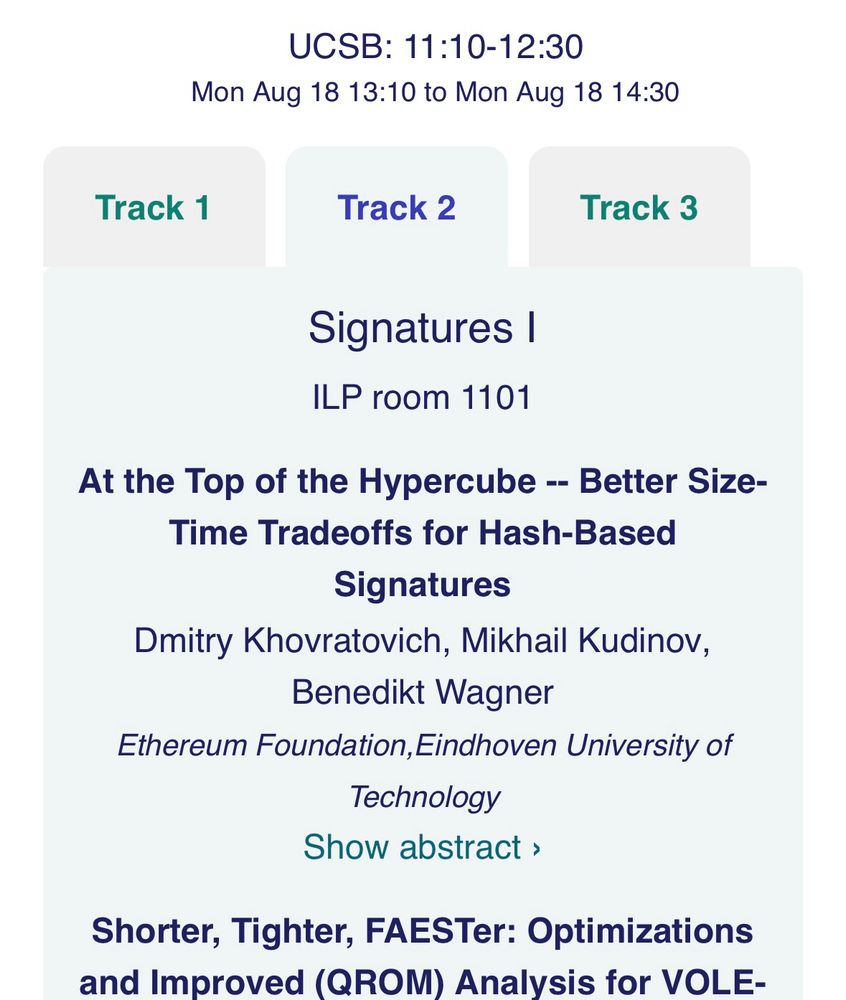
Crypto 2025 is just around the corner! Check out the full program here:
crypto.iacr.org/2025/program...
Join us on Monday for our talk where we explore the tradeoffs of hash-based signatures.
We then apply these findings to propose post-quantum Ethereum PoS signatures:
eprint.iacr.org/2025/1332
25.07.2025 18:00 — 👍 4 🔁 1 💬 0 📌 0
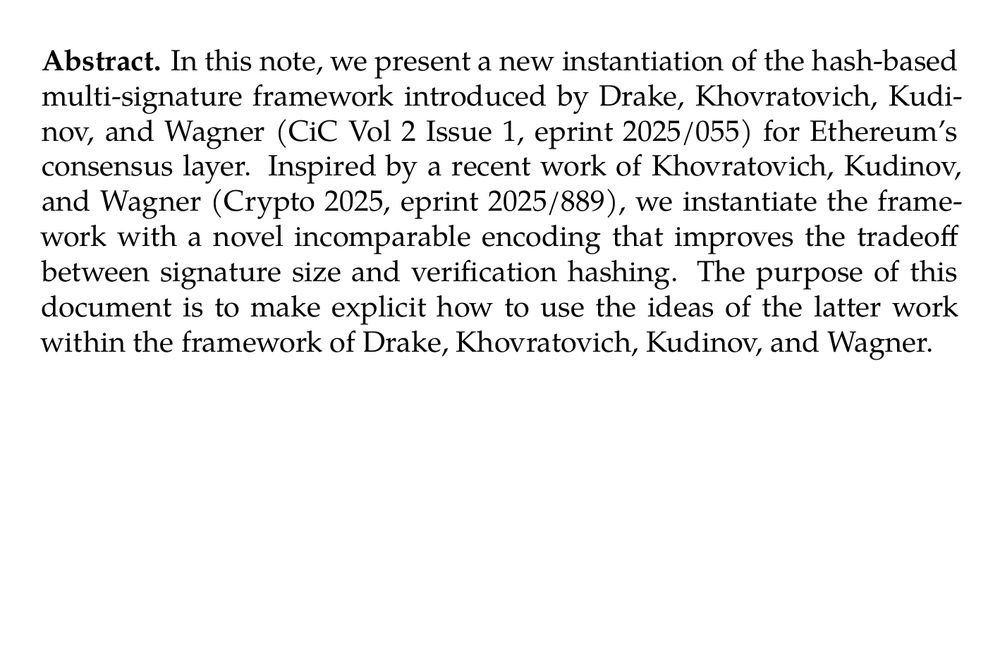
Abstract. In this note, we present a new instantiation of the hash-based multi-signature framework introduced by Drake, Khovratovich, Kudinov, and Wagner (CiC Vol 2 Issue 1, eprint 2025/055) for Ethereum’s consensus layer. Inspired by a recent work of Khovratovich, Kudinov, and Wagner (Crypto 2025, eprint 2025/889), we instantiate the framework with a novel incomparable encoding that improves the tradeoff between signature size and verification hashing. The purpose of this document is to make explicit how to use the ideas of the latter work within the framework of Drake, Khovratovich, Kudinov, and Wagner.
Technical Note: LeanSig for Post-Quantum Ethereum (Justin Drake, Dmitry Khovratovich, Mikhail Kudinov, Benedikt Wagner) ia.cr/2025/1332
22.07.2025 22:05 — 👍 2 🔁 1 💬 0 📌 0
I am rereading the comics. These are great an so many new ones came out :)
13.07.2025 07:28 — 👍 1 🔁 0 💬 0 📌 0
You never asked 😅
29.06.2025 17:32 — 👍 1 🔁 0 💬 0 📌 0
YouTube video by PewDiePie
I'm DONE with Google
PewDiePie’s evolution into a tech geek is so cool! His recent video dives deep into privacy concerns and surveillance issues, while being still fun to watch. I think these are the topics that couldn’t be more relevant today. Highly recommend watching his take on it:
🔗 youtu.be/u_Lxkt50xOg?...
29.06.2025 08:50 — 👍 2 🔁 0 💬 1 📌 0
Single author, fifteen pages, reduces the bit complexity of millenia-old UOV instances!!
19.06.2025 12:39 — 👍 13 🔁 3 💬 1 📌 0
A touchpad is also acceptable, but if you are using a mouse, why would you use Apple’s? :)
19.06.2025 17:32 — 👍 1 🔁 0 💬 0 📌 0
A nice 127 pages read 🥲
23.05.2025 11:37 — 👍 2 🔁 0 💬 0 📌 0
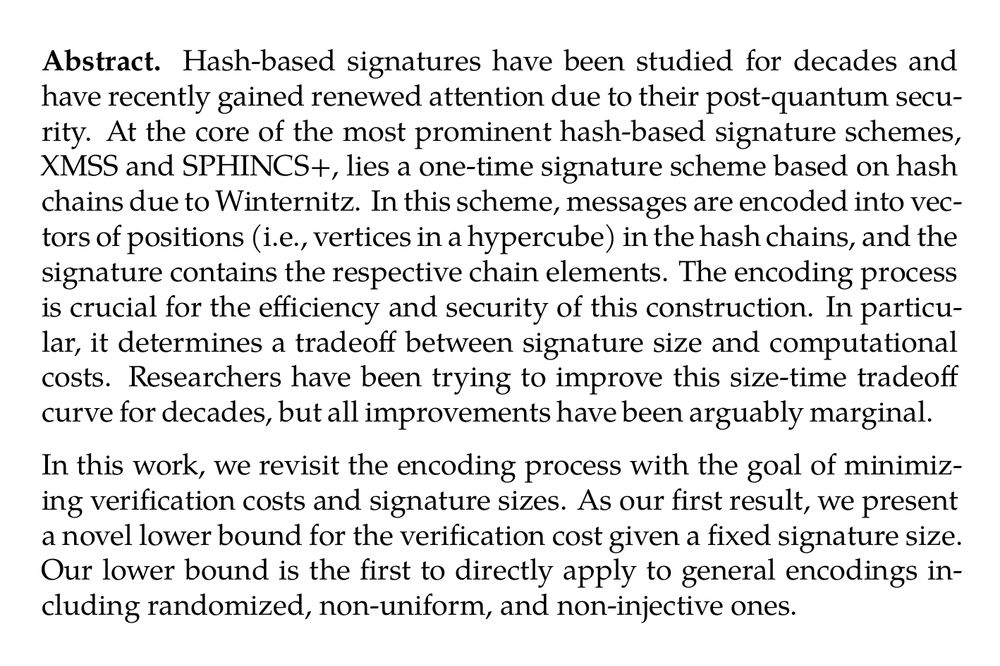
Abstract. Hash-based signatures have been studied for decades and have recently gained renewed attention due to their post-quantum security. At the core of the most prominent hash-based signature schemes, XMSS and SPHINCS+, lies a one-time signature scheme based on hash chains due to Winternitz. In this scheme, messages are encoded into vectors of positions (i.e., vertices in a hypercube) in the hash chains, and the signature contains the respective chain elements. The encoding process is crucial for the efficiency and security of this construction. In particular, it determines a tradeoff between signature size and computational costs. Researchers have been trying to improve this size-time tradeoff curve for decades, but all improvements have been arguably marginal.
In this work, we revisit the encoding process with the goal of minimizing verification costs and signature sizes. As our first result, we present a novel lower bound for the verification cost given a fixed signature size. Our lower bound is the first to directly apply to general encodings including randomized, non-uniform, and non-injective ones.
Then, we present new encodings and prove their security. Inspired by our lower bound, these encodings follow a counterintuitive approach: we map messages non-uniformly into the top layers of a much bigger hypercube than needed but the encoding itself has (hard to find) collisions. With this, we get a 20 % to 40 % improvement in the verification cost of the signature while keeping the same security level and the same size. Our constructions can be directly plugged into any signature scheme based on hash chains, which includes SPHINCS+ and XMSS.
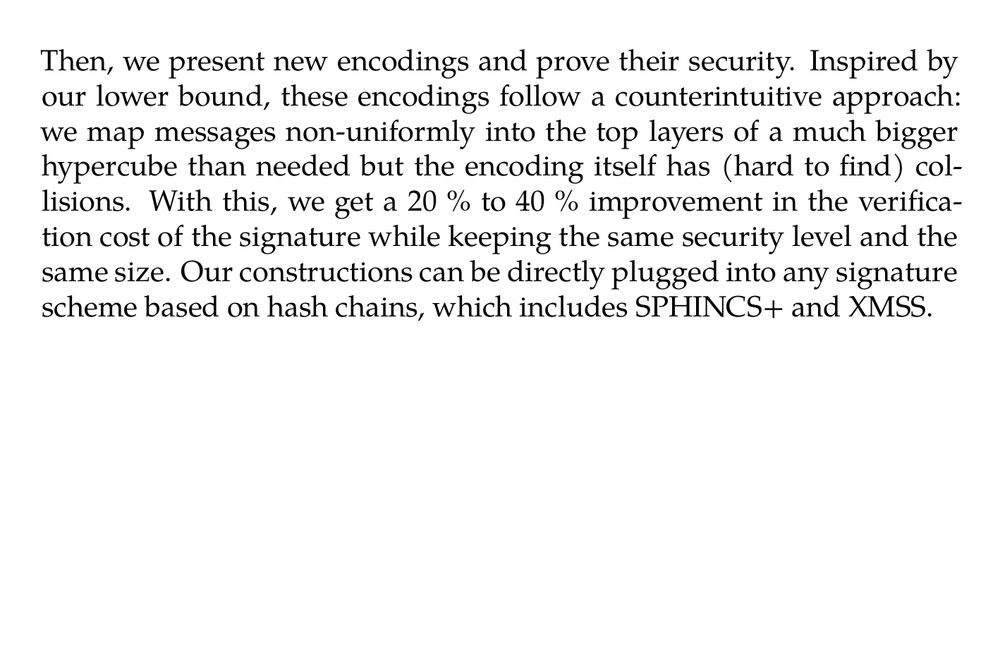
Image showing part 2 of abstract.
At the Top of the Hypercube – Better Size-Time Tradeoffs for Hash-Based Signatures (Dmitry Khovratovich, Mikhail Kudinov, Benedikt Wagner) ia.cr/2025/889
19.05.2025 10:27 — 👍 5 🔁 2 💬 0 📌 1
Will there be a recording?
17.05.2025 14:44 — 👍 1 🔁 0 💬 1 📌 0
Excited to be heading to #Eurocrypt2025 in Madrid soon!
I’ll be speaking at Algebraic Hash Cryptanalysis Days on Security Requirements in the Context of Hash-Based Signatures.
Catch me at the affiliated events or during the main conference. Let’s connect! #Cryptography #Madrid
29.04.2025 07:59 — 👍 5 🔁 0 💬 0 📌 0
YouTube video by PQCrypto conference videos
Treating Dishonest Ciphertexts in Post Quantum KEMs – Explicit vs Implicit Rejection in the FO T
🎤 My talk from #PQCrypto2025 is now live on YouTube!
I discussed rejection types in KEMs. Why they matter, how they impact security and which one should you choose.
Check it out & let me know your thoughts! 👇
📺 youtu.be/W-gUd_qTUs4?...
#PostQuantum #Cryptography #KEMs
27.04.2025 23:26 — 👍 4 🔁 3 💬 0 📌 0
Did they discuss the applications?
25.04.2025 08:49 — 👍 0 🔁 0 💬 1 📌 0
Builder. Zero-knowledge proofs, applied cryptography.
https://vitorpy.com
Researcher in cryptographic engineering at MPI-SP.
Dr. Reza Ebrahimi Atani is an associate professor in the Computer Engineering Department at the University of Guilan and Director of Computer Security Incident Response Teams Research Laboratory.
News and analysis with a global perspective. We’re here to help you understand the world around you. Subscribe here: https://econ.st/4fAeu4q
Исследования, репортажи, важные новости
🌉 bridged from 🌐 https://istories.media/: https://fed.brid.gy/web/istories.media
The Insider is a Russia-focused, independent media outlet. We're fully committed to investigative journalism and to debunking fake news.
theins.press/en
https://www.zksecurity.xyz/ Security audits, development, and research for ZKP, MPC, FHE, PQC, and more generally advanced cryptography. Contact us: hello@zksecurity.xyz
https://cryptologie.net/ | founder of @zksecurity.bsky.social | research advisor ArchetypeVC | author of Real-World Cryptography | Previously architect for Mina (at O(1) Labs), security lead for Libra (at Facebook), cryptography services at NCC Group
Associate Professor in Cryptology and Research Group Leader at the NTNU Applied Cryptology Lab in Trondheim, Norway.
Homepage: https://tjerandsilde.no
Research group: https://www.ntnu.edu/iik/nacl-lab
libsecp256k1 dev supported by @spiralbtc | Prev: Maths @IITKgp, Intern @summerofbitcoin
security at brave software / @bcrypt on twitter
Inequality Economist, former trader and author of The Trading Game. Other Economists make predictions, but my ones are actually right.
https://linktr.ee/garysecon
Open source privacy and security focused mobile OS with Android app compatibility.
https://grapheneos.org/
Passbolt is an open source credential platform for modern teams. A versatile, battle-tested solution to manage and collaborate on passwords, accesses, and secrets. All in one.
https://www.passbolt.com/
Post--Quantum Cryptography Support Action.
Digital Europe project.
Views and opinions expressed are those of the authors only and do not necessarily reflect those of the European Union.
Doctoral candidate at TU Munich, working on Post-Quantum Cryptography, Hardware- and Software Implementations
Assistant prof at U Waterloo. Aspiring full-stack cryptographer. Loves math, plants, flashcards. Opinions reflect those of all past, present, and future employers.
RC F'13, F2'17
Cryptogopher / Go cryptography maintainer
Professional open source maintainer
https://filippo.io / https://github.com/FiloSottile
https://mkcert.dev / https://age-encryption.org
https://sunlight.dev / https://filippo.io/newsletter
Cryptographic & Security Engineering
www.fredericjacobs.com
https://ger.mx/A-RGsldmQt0iXfnzPgXNzLzA5_jvDbWHabqz1yJrt2ma#did:plc:oxwmqopgbm3driwzues7odpz



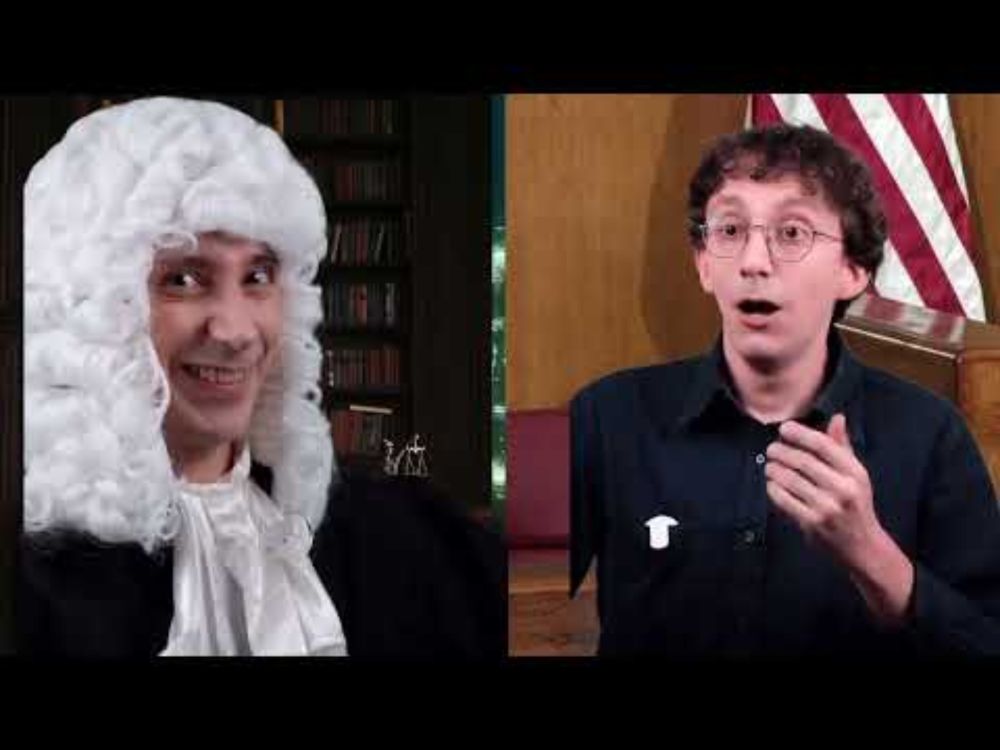
 26.07.2025 20:56 — 👍 2 🔁 0 💬 0 📌 0
26.07.2025 20:56 — 👍 2 🔁 0 💬 0 📌 0







